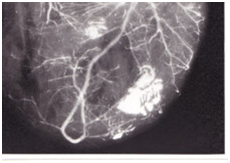Journal of
eISSN: 2373-4396


Research Article Volume 3 Issue 2
Fellow of the American Society of Hypertension, USA, Fellow of the Royal Society for Promotion of Health, United Kingdom
Correspondence: Aurelio Leone, Fellow of the Royal Society for Promotion of Health, Via Provinciale 27, 19030 Castelnuovo Magra (SP), Italy, Tel 393472272215
Received: June 16, 2015 | Published: July 30, 2015
Citation: : Leone A. Hypertension and sudden cardiac death: their relationship in post infarction cardiac rupture. J Cardiol Curr Res. 2015;3(2):1-6. DOI: 10.15406/jccr.2015.03.00094
The purpose of this study was to assess the relationship between hypertension (H) and sudden cardiac death (SCD), defined as a result of a cardiac event heralded by an abrupt loss of consciousness within one hour from the onset of acute symptoms in healthy individuals and in patients (pts) suffering from heart disease, in pts died from post infarction cardiac rupture (PCR). 168 autopsy cases (100%) with acute myocardial infarction were studied. 108 pts were males (64%) and 60 (36%) females with a mean age 64.3+/_18 years. 46 pts (27%) showed PCR. Clinically, the presence of H and symptoms of impending rupture was recorded. Pathological exam was conducted by analyzing gross and microscopic characteristics of the myocardium and coronary arteries of all pts. 2 pts (4.3%) showed sudden H as a symptom of impending rupture (respectively from 118/86 mmHg to 180/95 mmHg and 145/90 mmHg to 190/98 mmHg) and chest pain resistant to opiates. They deceased within 1 hour from increased H. The other 44 pts with PCR were hypertensive in 27 cases (61%) at the admission, while 17 (39%) displayed no H. Pts with rupture had a statistically significant increase of coronary alterations, cardiac hypertrophy, and up to 90% coronary stenosis (P<0.01). H was a symptom of impending rupture followed by SCD not frequently observed.
Keywords: sudden cardiac death, hypertension, post infarction cardiac rupture
The relationship between hypertension (H) and sudden cardiac death (SCD), defined as a result of a cardiac event heralded by an abrupt loss of consciousness within one hour from the onset of acute symptoms in healthy individuals and patients suffering from heart disease, is far to be well established.1˗3 On the contrary, pre-existing hypertension has been identified to be a factor, which is often associated with post infarction cardiac rupture (PCR).4˗6 Evidence indicates that cardiac rupture during an acute myocardial infarction occurs with a high rate ranging up 8% in the patients affected by the acute ischemic disease.3˗4,7˗10 The purpose of this retrospective study was to assess the relationship between H and SCD in pts died from post infarction cardiac rupture (PCR).
168 autopsy cases with acute myocardial infarction were studied. 108 pts were males (64%) and 60 (36%) females with a mean age 64.3+/_18 years. 46 pts (27%) showed PCR. Clinically, the presence of H and symptoms of impending rupture was recorded. Pathological exam was conducted by analyzing gross and microscopic characteristics of the myocardium and coronary arteries of all patients using a method of investigation previously described.11 The characteristics of study subjects are in Table 1.
Number |
168 (100%) |
Males |
108 (64%) |
Females |
60 (34%) |
Mean age |
64.3+/- 18 years |
PCR |
46 (27%) |
Table 1 Study Population
2 pts (4.3%) Table 2 showed sudden H as a symptom of impending rupture (respectively from 118/86 mmHg to 180/95 mmHg and 145/90 mmHg to 190/98 mmHg) and chest pain resistant to opiates. They deceased within 1 hour from increased H. The other 44 pts with PCR were hypertensive in 27 cases (61%) at the admission, while 17 (39%) displayed no H. Pts with rupture (Figures 1-4), and (Table 3) had a statistically significant number of multiple coronary alterations, cardiac hypertrophy (mean heart weight 627+/-188 grams and left ventricle wall thickness 25+/-3 mm vs 400+/-75 grams for heart weight and 14+/-2mm for left ventricle wall thickness in pts with no rupture), irregular areas of confluent fibrosis and coronary narrowing up to 90% with a high incidence of occlusive thrombi.
Subjects (n°2; 4.3%) |
BP Baseline |
BP Before Rupture |
1st |
118/86mmHg |
145/90 mmHg |
2nd |
180/95 mmHg |
190/98 mmHg |
Table 2 BP increase in the 2 subjects before PCR
BP |
Number |
Heart Weigh (grams) |
LV Wall Thickness (mm) |
H |
27 (61%) |
627+/-188 |
25+/-3 |
NoH |
17 (39%) |
400+/-75 |
14+/-2 |
Table 3 Parameters in PCR related to baseline H.

Figure 1 Postmortem angiography of heart with post infarction rupture. It can be seen an irregular filling of the coronary tree and a large a vascular area at the site of the infarction.

Figure 2 Irregular rupture line of the left ventricle anterior wall and marked cardiac hypertrophy of a patient acutely deceased from PCR.
H was a symptom of impending rupture followed by SCD not frequently observed in contrast to the fact that pre-existing H appeared to be a variable often associated with the development of myocardial rupture.
None.
Author declares there are no conflicts of interest.
None.

©2015 :. This is an open access article distributed under the terms of the, which permits unrestricted use, distribution, and build upon your work non-commercially.